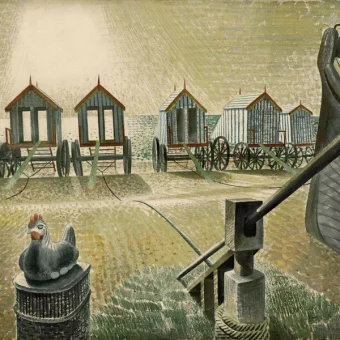D-Day: The French after the Allied invasion. What did they look like? Well, thanks to the intrepid reporters who risked life and limb to record the fighting, we have an idea. We’ve seen the preparations for the Invasion of France. We’ve seen the wonderful photos of the Allied forces storming the Normandy beaches. We’ve seen the Germans, Japanese, Mongols and Austrians – some of them very young – captured by the Allied forces.
But what about the French, who had endured four years of Nazi occupation? The Resistance took heart. The refugees took bread and water. The collaborators took a beating.
All captions below were written at the time. They tell a story. What was said. What was unsaid. The tide in the war had turned in our favour. But war was raging. Morale needs boosting.
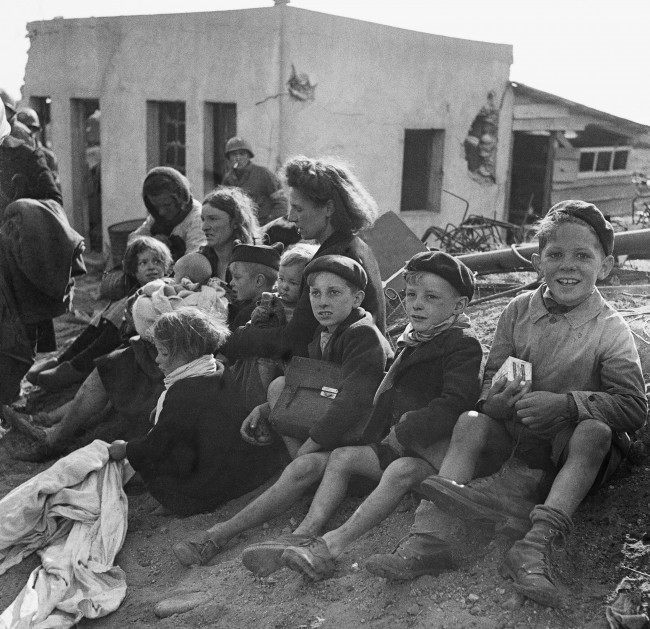
French civilian refugees who sought refuge in a beachhead area in Normandy on June 10, 1944. (AP Photo)- Date: 10/06/1944
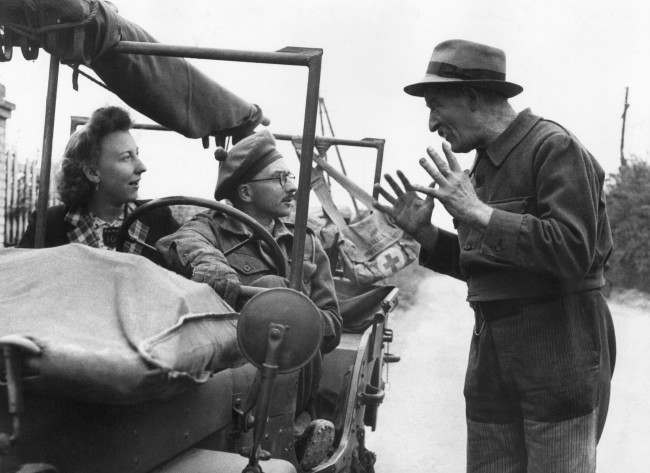
When he is off duty an Army Medical officer acts as a village doctor to the civilians of Benouville, Normandy. A dispenser from a local hospital travels around with the M.O., and acts as his interpreter. The treatment and advices given by the M.O. is much appreciated by the people of Benouville, they have had no doctor to consult since D. day. The people not only seek treatment for themselves, but they bring their animals along too. The Medical Officer from South Africa goes on rounds in his jeep in France on August 30, 1944 with Mademosielle Dervis his interpreter, the M.O. is asked by a village to pay a visit to his daughter who is ill. (AP Photo)
On the 40th Anniversary of D-Day in 1984, President Ronald Reagan spoke at Pointe du Hoc, France:
“The men of Normandy had faith that what they were doing was right, faith that they fought for all humanity, faith that a just God would grant them mercy on this beachhead or on the next. It was the deep knowledge – and pray God we have not lost it – that there is a profound moral difference between the use of force for liberation and the use of force for conquest.”
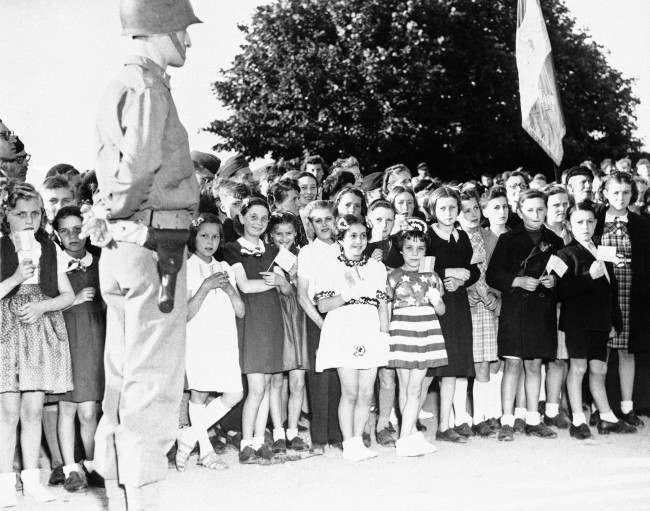
French children of the Normandy town of Grandcamp, France, some carrying American flags and others dressed in patriotic costumes, join American occupation troops in celebrating the American Independence Day on July 4, 1944. Many residents turned out for the ceremonies in the village, which was the first to be liberated by the invading allied forces. (AP Photo)
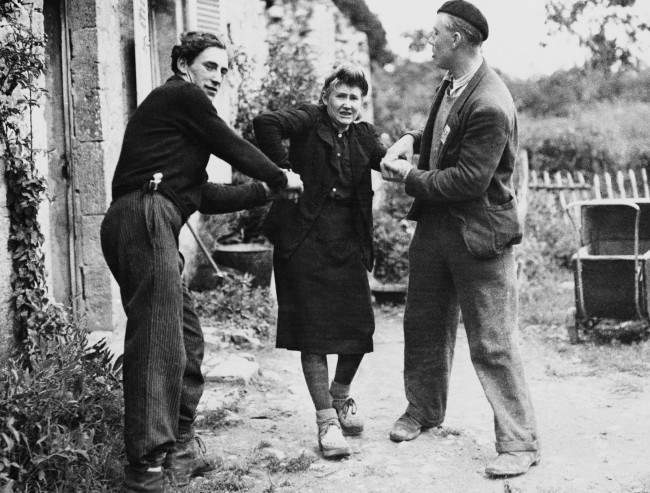
Two French patriots drag Grande Guillotte from her home in Normandy, France on July 10, 1944. After she was discovered to be collaboration with the enemy. The patriots carried through their punishment by shearing off her hair. (AP Photo)
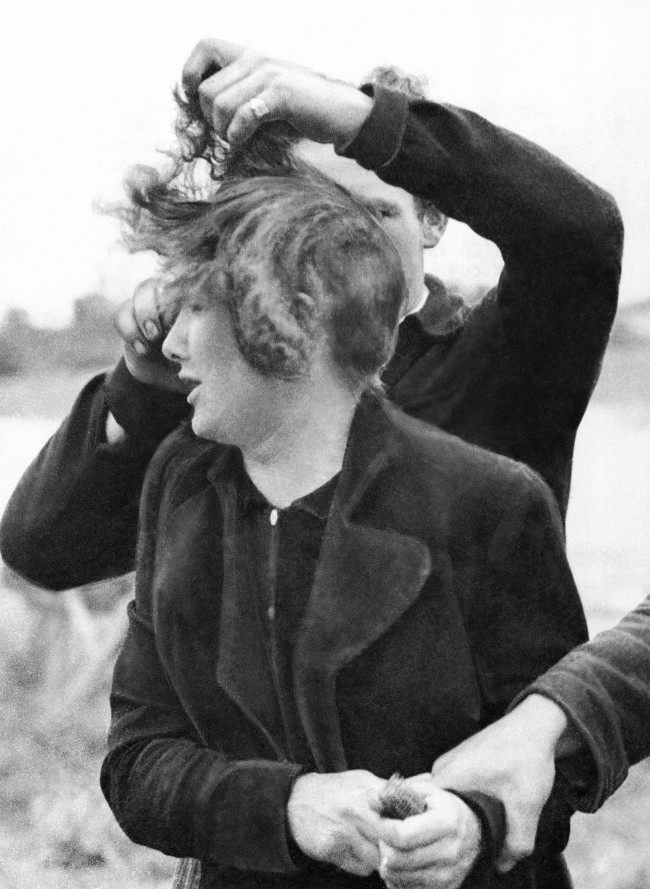
Grande Guillotte, 23 year-old-French girl collaborated with the Germans in Normandy. When her town was liberated by Allied troops, French patriots dragged her from her house and cut off all her hair. A French patriot cuts off Grande Guillotte’s hair while another holds her in France on July 7, 1944. (AP Photo)
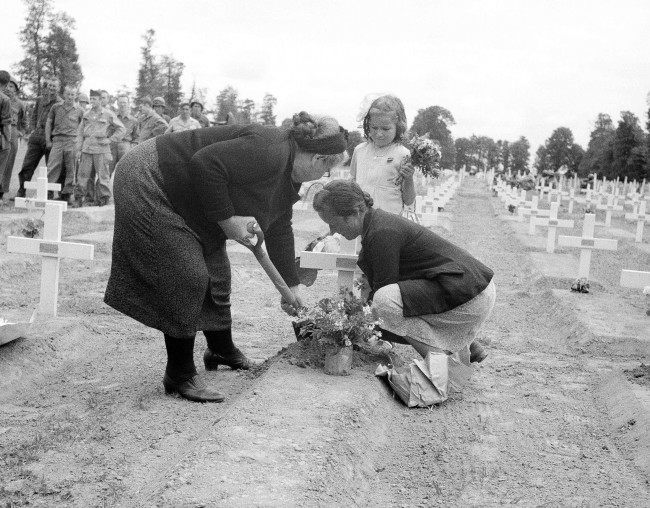
A French family living in the La Cambe area of Normandy, France on July 15, 1944, now liberated by the allies, place flowers on the graves of the U.S. dead as part of the Bastille Day celebrations. (AP Photo/Bede Irvin)
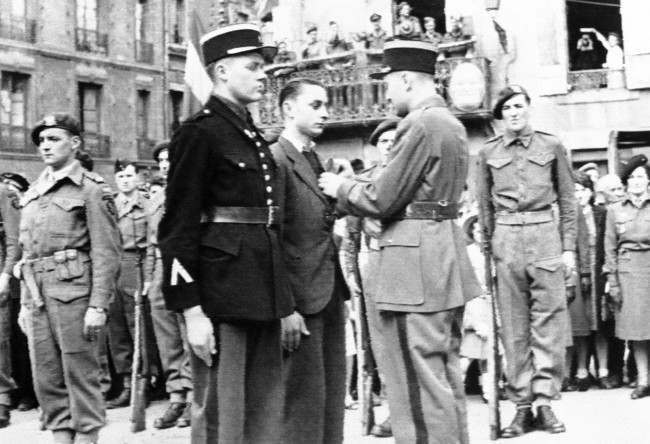
The gendarme (left center) who led the first British troops into Bayeux, and a French underground leader, center, are decorated with the Croix de Guerre during Bastille Day ceremonies in a French city on the Normandy coast, France on July 15, 1944. (AP Photo)
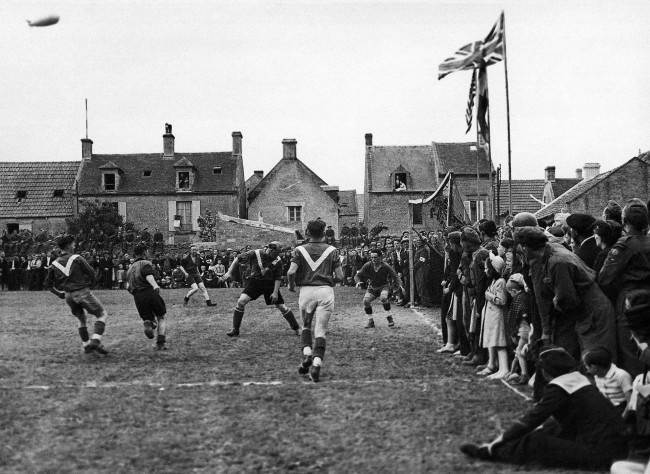
For the first time since 1939, French men and women in the liberated towns and villages of Normandy were able openly to celebrate on July 14th, Bastille Day, without fear of German reprisals. In the little town of Coursoulles near the coast, where this picture was taken in July 1944, British troops played a football match against the local French team and all the towns folk turned out to watch the game. The match in progress with enthusiastic spectators crowding the touch-line. (AP Photo/Photographic News Agencies, LTD.)
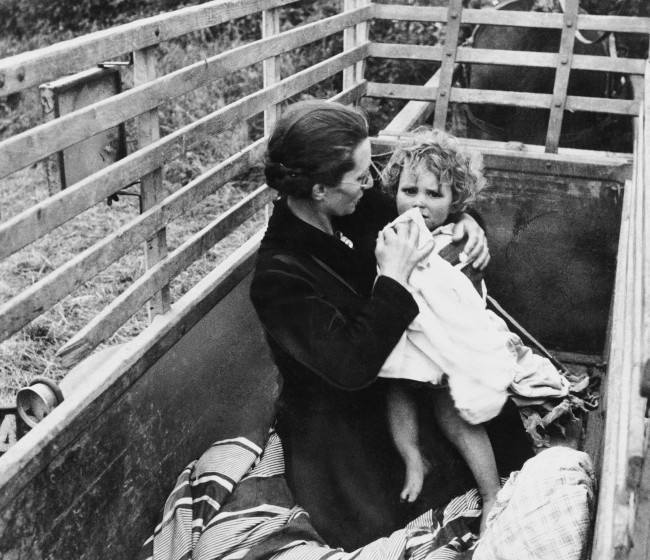
Arriving behind the allied lines in Normandy via the family horse-drawn wagon, French mother and child take advantage of their first few moments of safety to spruce up a bit on July 14, 1944. (AP Photo)
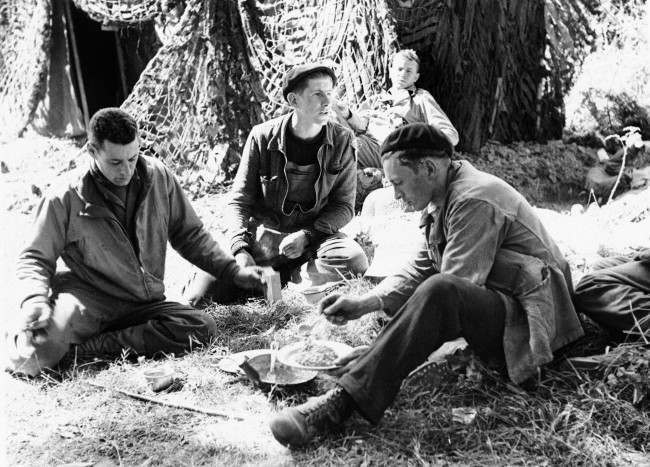
A four long years of fearless resistance to the Nazi Oppressors of France, the French Underground today is gradually emerging from hiding to fight the last lap of its battle for freedom. Gleaning vital information about German Fortifications the Patriots try to establish contact with Allied Forces moving thru Normandy. After turning all their information over to the Allies, the Frenchmen sit down the meal with their American Friends in France on July 17, 1944. The fare isnÂt very fancy, but Yank rations taste mighty good after years of the starvation diet on which the Germans kept the people of the occupied France. (AP Photo)
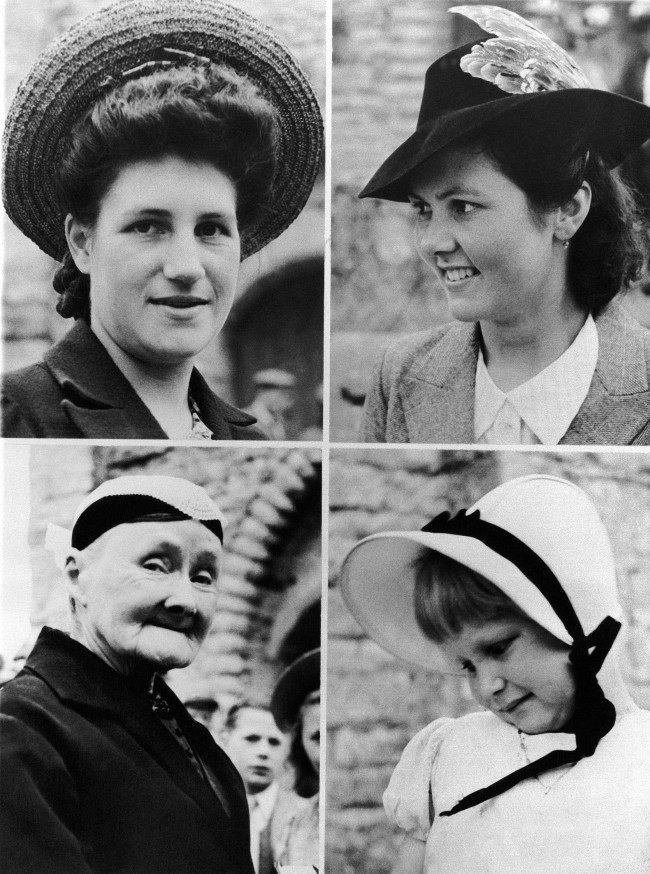
War or no war, milady makes it a point to look her best in Normandy. These were among the hat styles in evidence when women of the war-torn town of Vouilly in France on July 22, 1944, turned out for church services. (AP Photo)
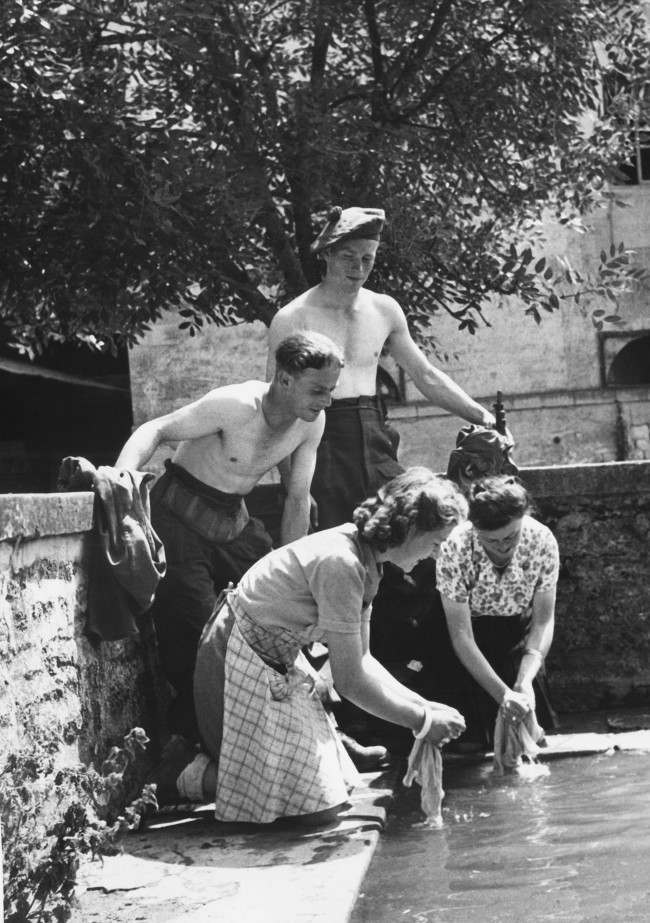
Two British soldiers taking part in the liberation of France from the Germans are rewarded by Frenchwomen, of a Normandy farm, by having their laundry washed for them in France on July 15, 1944. (AP Photo)
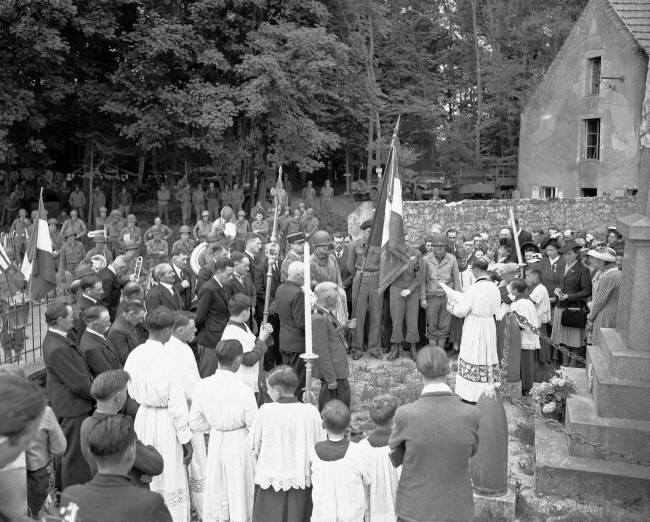
U.S. Army bandsmen (left, background), attend with French civilians the Bastille Day services held in a church cemetery in the liberated village of Castilly in Normandy, France on July 19, 1944. (AP Photo/Harry Harris)
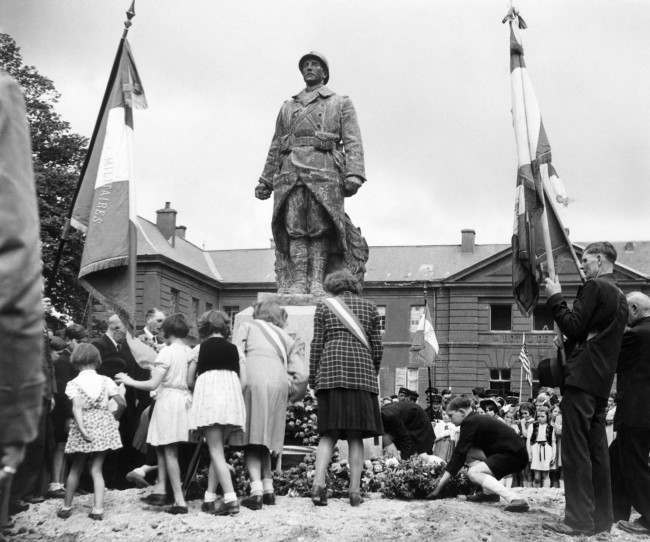
Bastille Day celebrations in the little Normandy town of Isigny on July 19, 1944 took the form of services at the townÂs War Memorial. French children pass in turn to lay their tributes to war dead at the War Memorial during the services. (AP Photo/Bert Brandt)
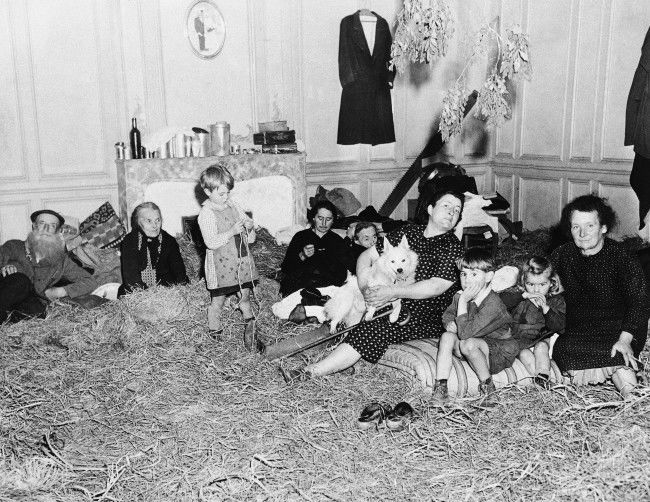
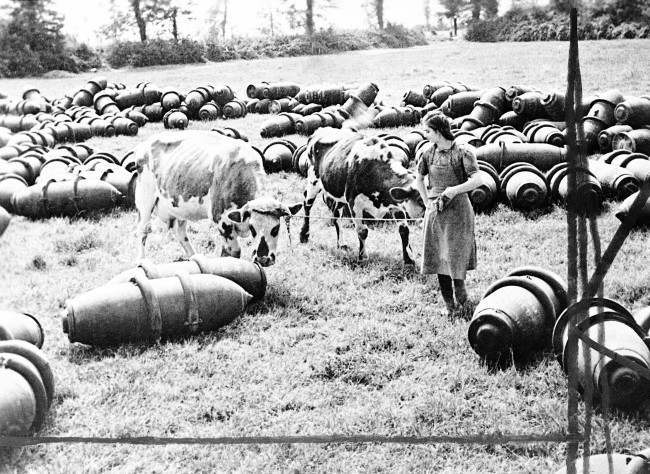
A French dairymaid leads her cows across a meadow filled with R.A.F., 1,000 lb, bombs in Normandy, France in August 1944. These bombs were not fused, they have just been unloaded and will later be stacked. (AP Photo)
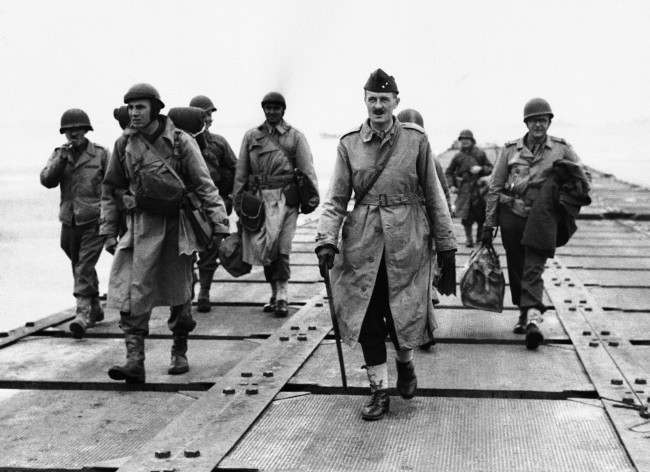
French General Philippe Le Clerc, carrying walking stick, shown walking down a pier somewhere in Normandy, France, on Aug. 2, 1944, after his arrival. This is his first visit to France in four years. (AP Photo)
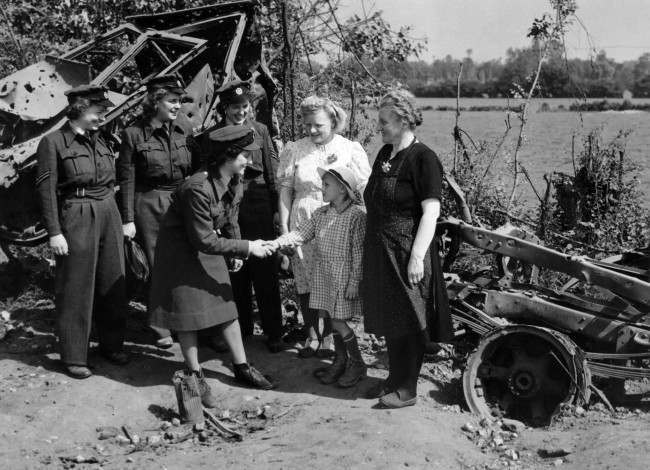
Members of the first WAAF contingent to arrived being greeted by French people in Normandy on August 6, 1944. In the back ground is a burnt-out German motor vehicle. Section Officer J. Bradbury of Hale, Cheshire is shaking hands with the child; looking on from left to right are Cpl. J.J. Disney of Denton, Norfolk, L.A.C.J. Davis, of Dalson, London E.8. and Sgt. M.D. Easson of Edinburgh. (AP Photo)
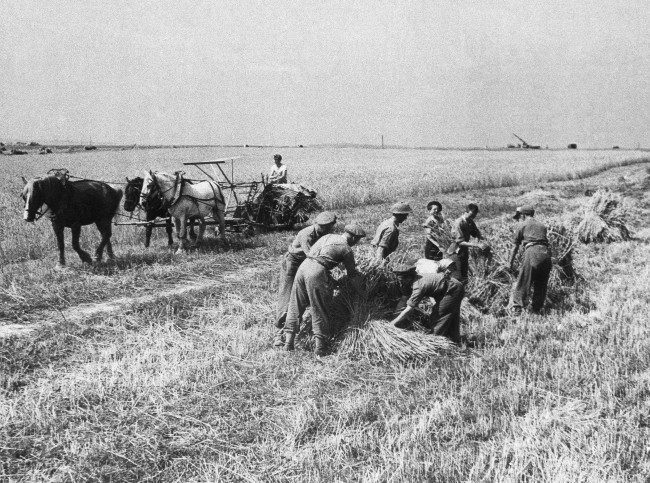
Harvesting has been in full swing in Normandy, and in spite of the war a good harvest was anticipated. Reapers everywhere, cutting the wheat in the midst of all kinds of machines of war, have carried on. British soldiers, off duty, have in many instances helped with the harvesting. The Germans had put barbed wire in abundance through the crops. The wire had to be carefully cleared away before the reapers could begin. General view of reapers at work with British soldiers helping French farmers in France on August 16, 1944. (AP Photo)
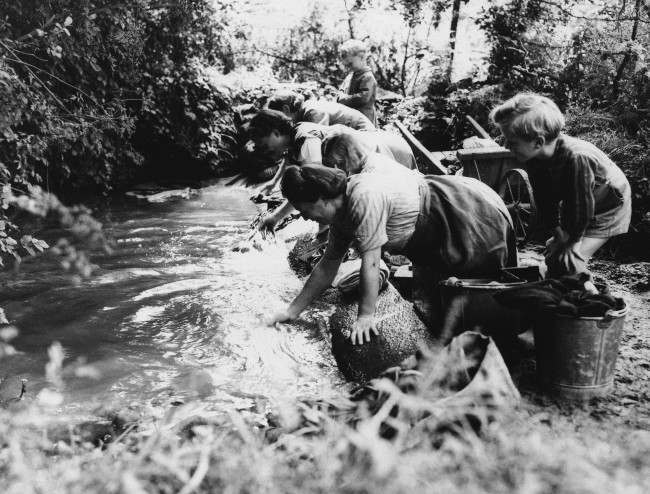
French children watch their mothers wash clothes in a brook in Normandy on August 23, 1944 in an area liberated from the Nazis by American Forces. (AP Photo/Lawrence Riordan)
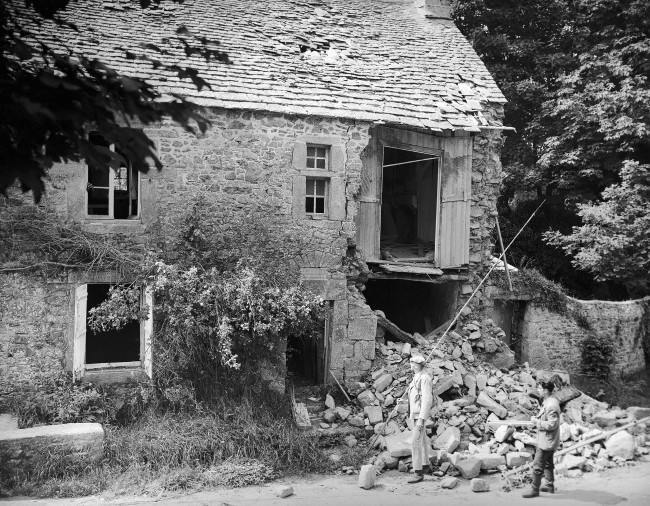
Two French civilians look over the wrecked birthplace of the French painter, Jean-Francois Millet in France on August 28, 1944. The house was situated at Gruchy near Greville, which was one of the most heavily fortified regions on the Normandy coast and the scene of many bitter battles before it was liberated by the Americans. Many Nazi soldiers were taken prisoner near here. (AP Photo/Lawrence Riordan)
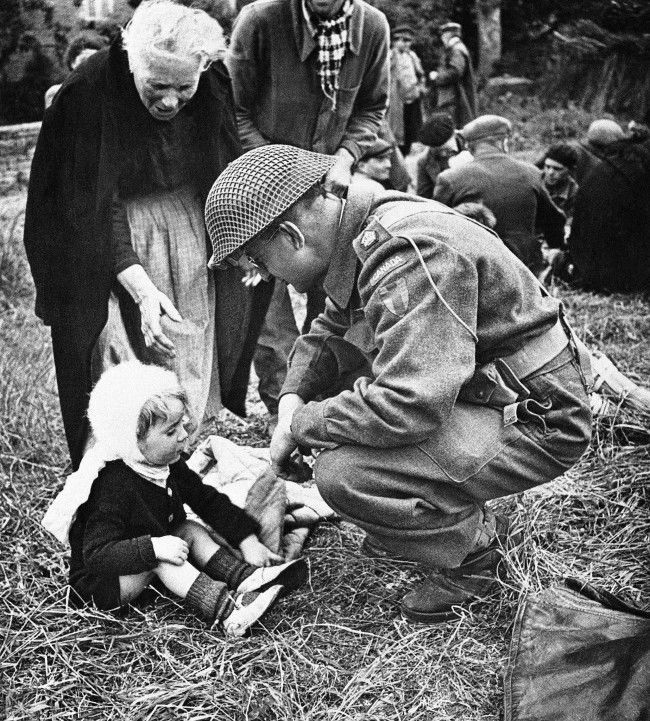
A Canadian soldier, serving with the British forces in Normandy, France, strikes up an acquaintance with a little French girl on Sept. 7, 1944, one of a group of refugees that were fed by the liberating armies. The feeding arrangements were organized by the Civil Affairs. (AP Photo)
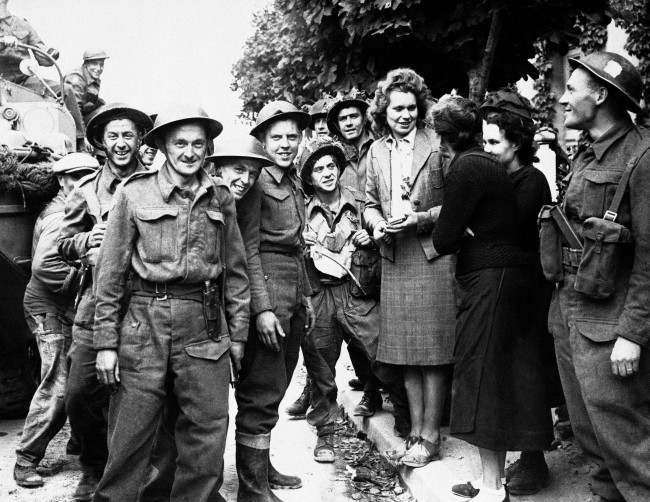
French girls give a hearty welcome to Canadian troops passing thru a town in the Normandy coast area of France on Oct. 6, 1944 after Allied assault forces had driven back the Germans. (AP Photo)
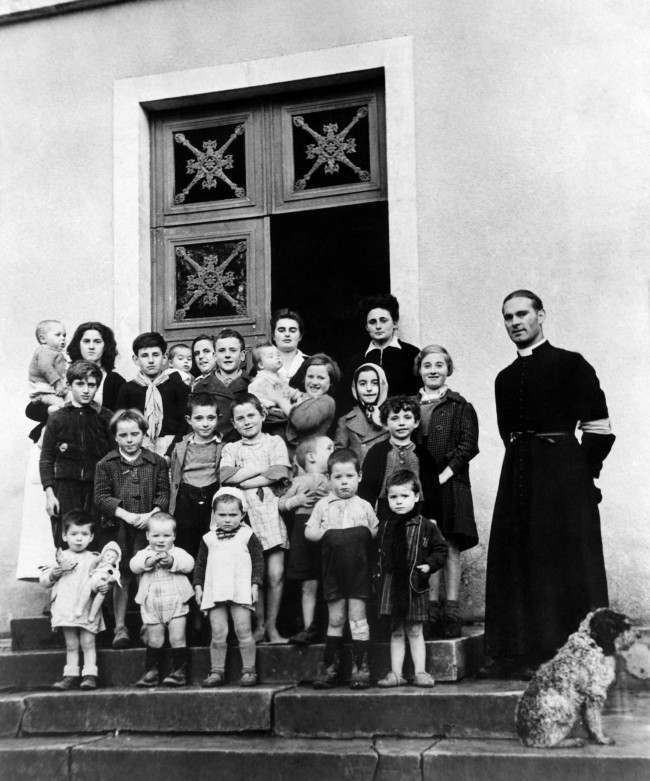
French war orphans Âsomewhere in Normandy with Abbe Noe, Parish priest, at the new French colony opened by the Foster Parents plan for war children on Dec. 11, 1944. The children had one blanket for all and were living on a diet of coffee and stale bread when they were found by Lieut. Bishop Marshall, plan representative in France. (AP Photo)
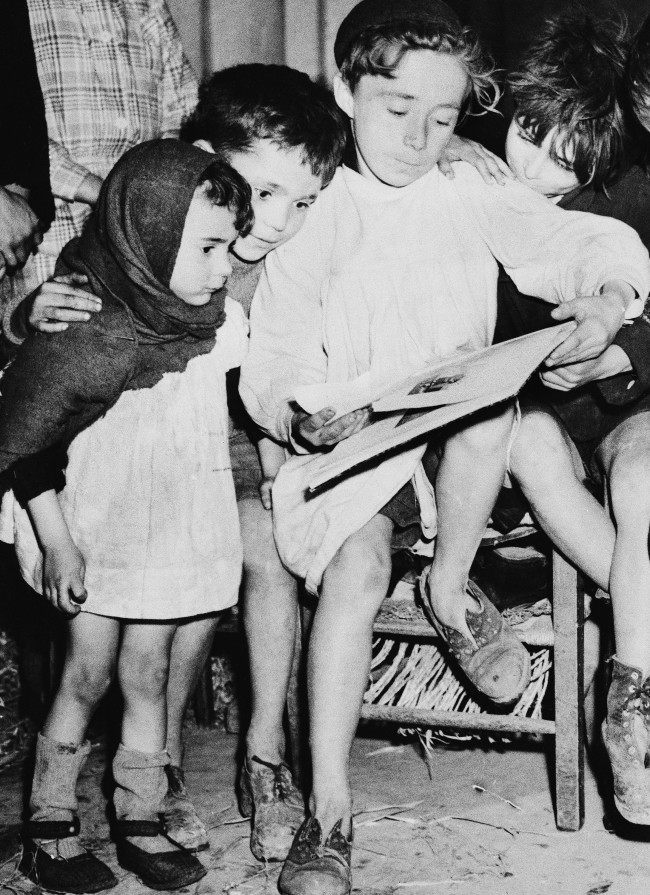
While the battle raged around them during the allied push in Normandy last summer, these French children found refuge in the Cathedral in Caen. Most of them were stocking less, their shoes were torn, their garments shoddy. Children caught in the holocaust of war in Caen on May 18, 1945. (AP Photo)
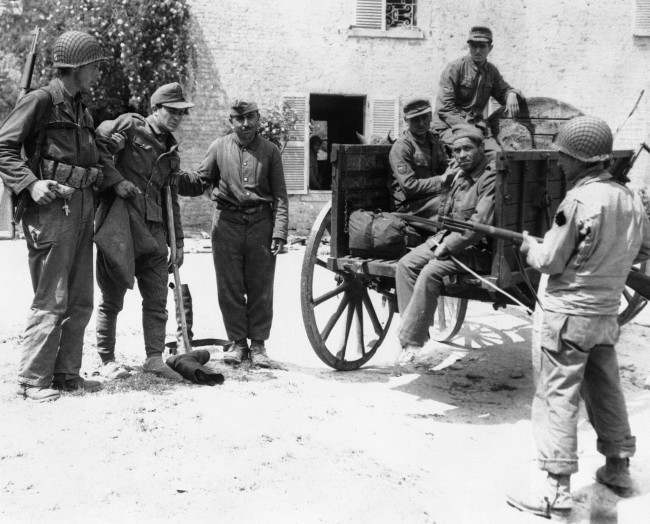
An American soldier and a French peasant assist a wounded Nazi prisoner into a cart in which he and others captured in a small French village, in Normandy, on June 10, 1944, were transported back to the beach en route to England and internment. (AP Photo)
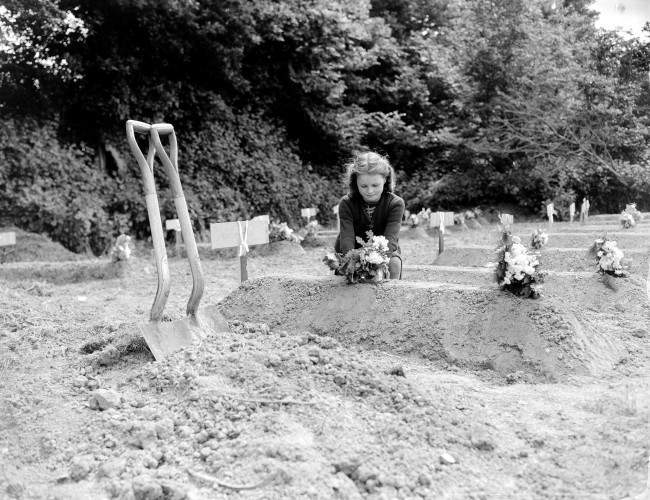
A French girl places flowers over the freshly-dug grave of an American Airborne trooper as a token of appreciation of arrival of Allied liberators on the northern coast of France, June 12, 1944. The trooper was killed when his glider landed in the Normandy area of France in World War II. (AP Photo/Peter J. Carroll)
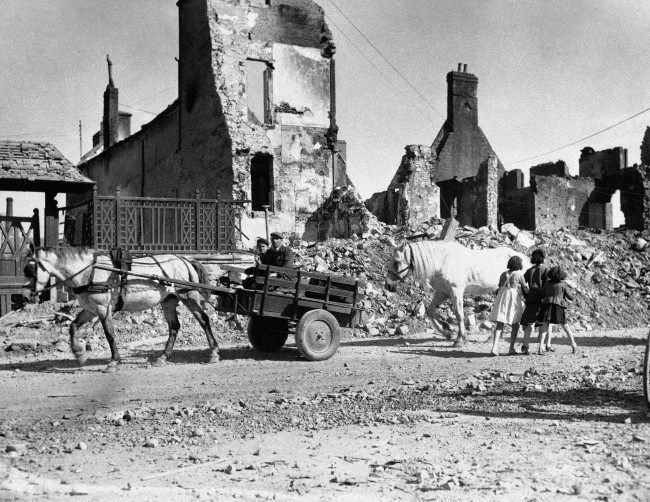
Natives of a French village shattered by the Normandy invasion fighting move down a road past ruined buildings on June 15, 1944. (AP Photo)
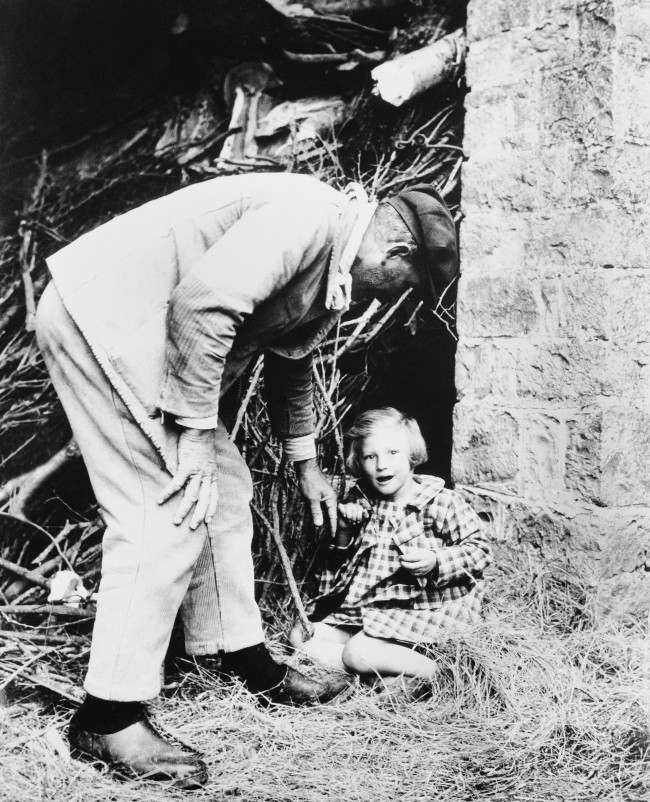
A bright-eyed little French girl is persuaded to leave the spot, behind a pile of branches, where she made her home when the Allies swept into her community in Normandy on June 15, 1944. (AP Photo)
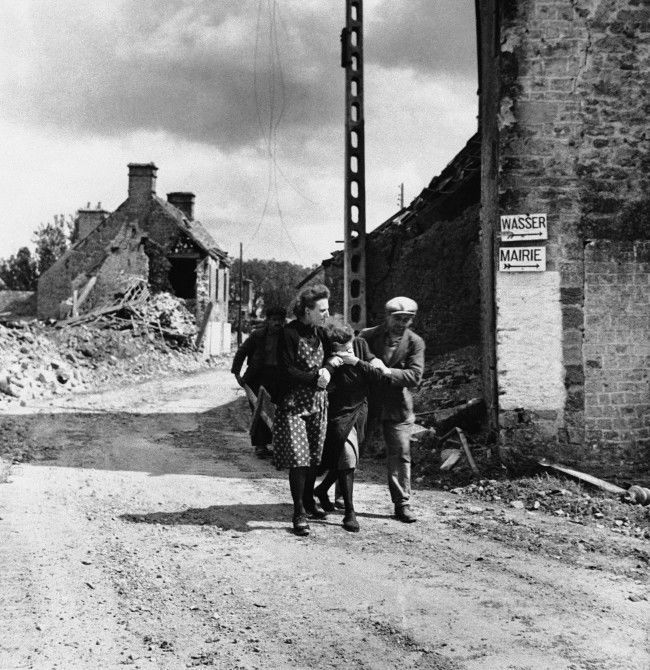
Two friends assist a weeping woman (center) in the Normandy village of Ste. Marcouf on June 19, 1944, after her husband was killed when the Germans shelled the place. The manÂs body is inside the store at right, upon which the Germans placed two signs: Wasser (German for water) and Mairie (French for town hall). (AP Photo)
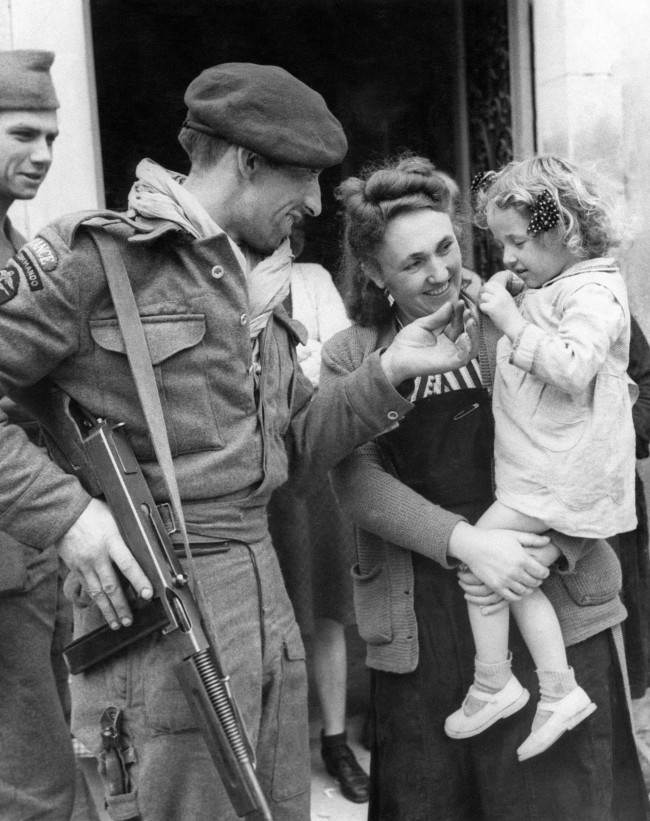
French villagers welcomed members of a French Commando who landed in Normandy in Amfreville, North of Ranville on June 17, 1944. Chester Wilmot, BBC commentator was also there at the time. A French Commando greeting a little girl who had been brought out to see him. (AP Photo)
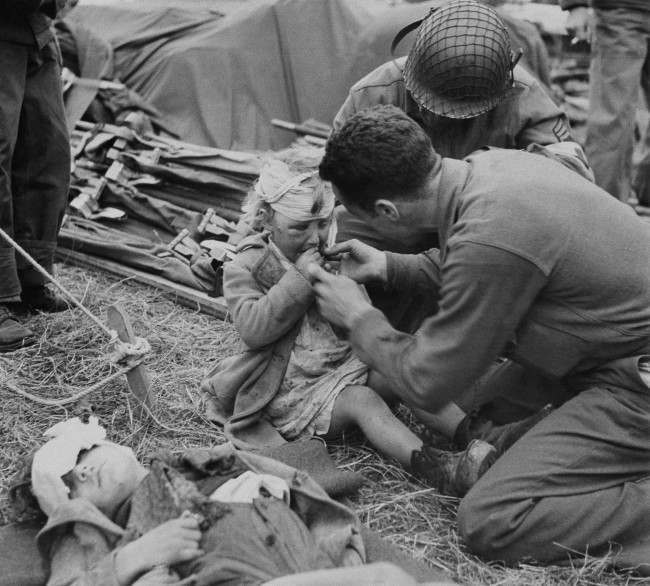
American Army medical corpsmen try to assuage the grief of a little French girl with a gift of candy in France, June 17, 1944. Her head is bandaged and face swollen. Another child lies in front with his head bandaged. Both youngsters are evidently under the effects of the terror of Normandy. (AP Photo)
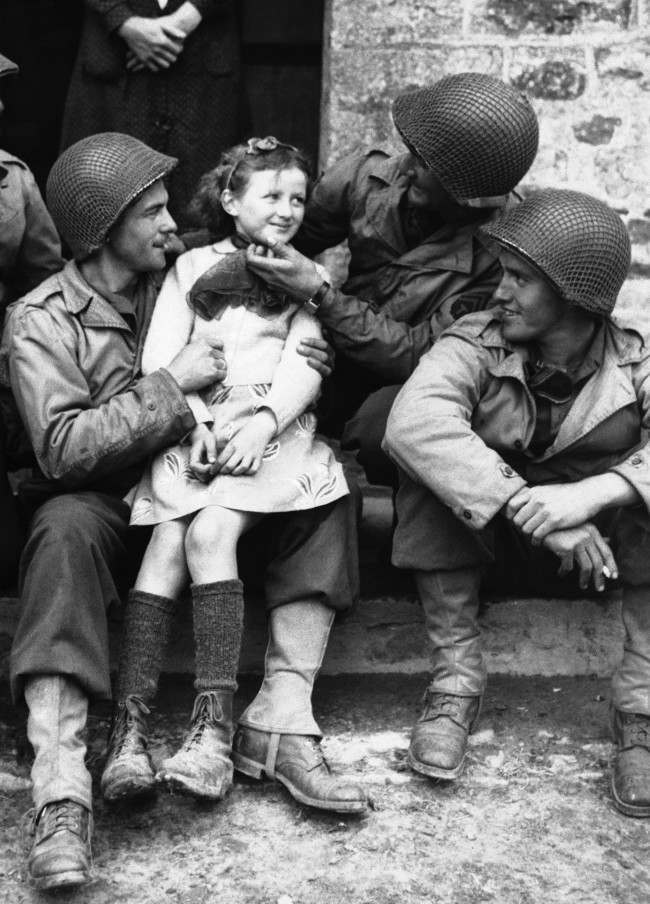
A little French girl finds three admirers from the ranks of American forces who have made a speedy and successful advance through Normandy, France on June 22, 1944. From left to right,Private Robert D. Furra, Private Willie Johnson and Private C.K. Jones. (AP Photo)
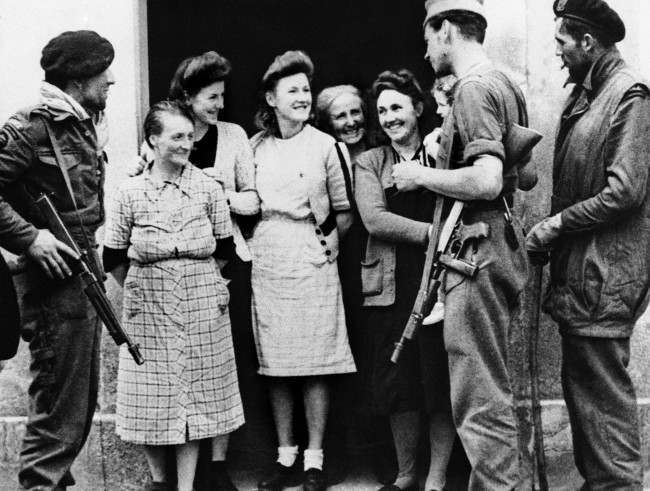
Villagers of Amfreville, France, chat with members of a French commando unit who landed in Normandy with Allied forces on June 20, 1944. (AP Photo)
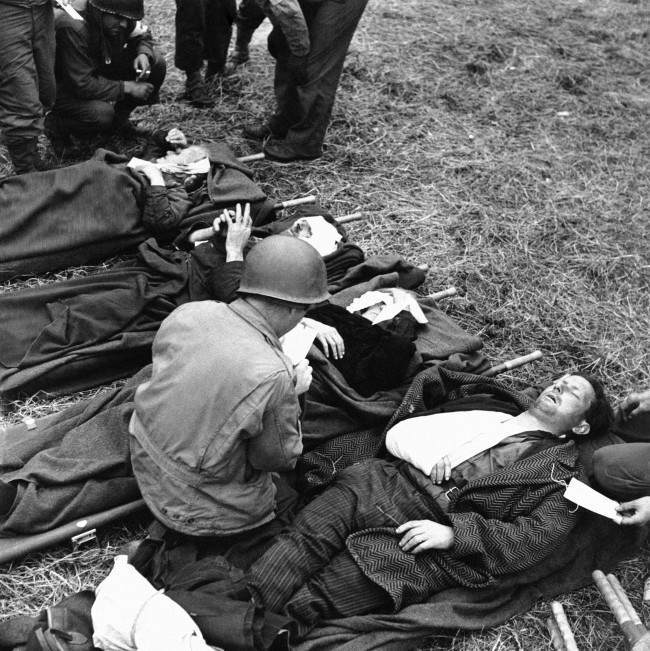
rench civilians, wounded during the Normandy battles on June 19, 1944, lie on stretchers on the ground behind the lines, where they are treated by U.S. Army medical corpsmen. (AP Photo)
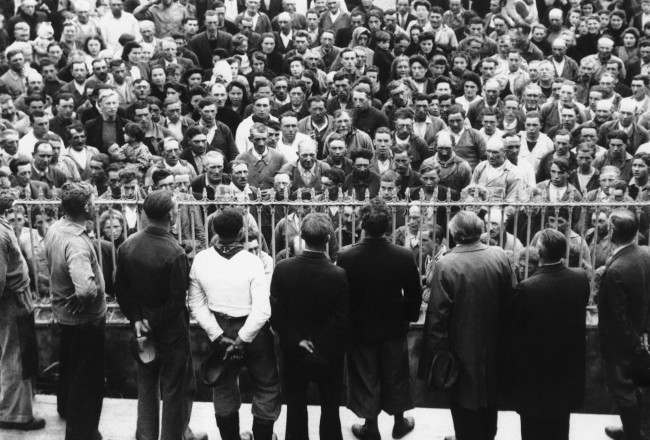
The men folk of the fishing village of Grandcamp Les Bains in Normandy, France , are being addressed by members of the resistance committee to voluntarily register for the new army of France.
Date: 30/06/1944
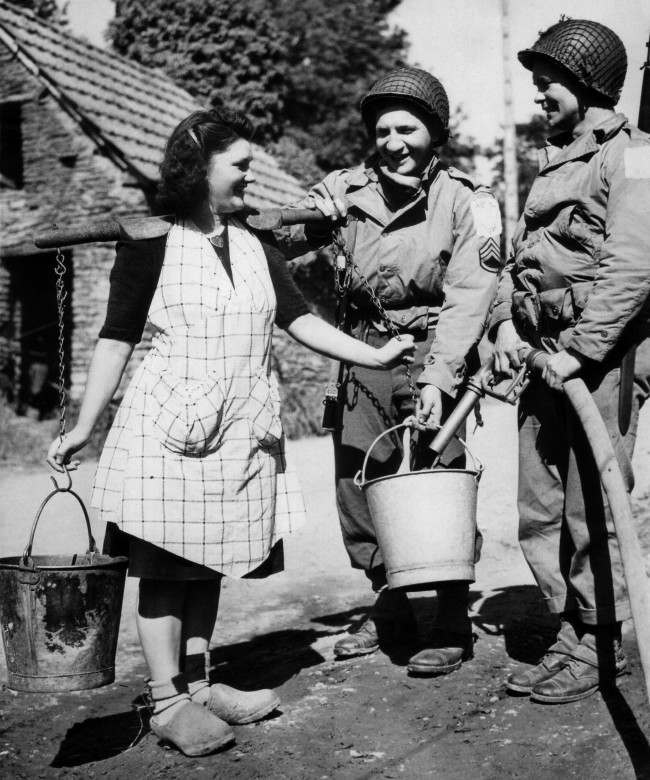
Two American soldiers, Staff Sgt. Bernard Dargols, New York, and Tech., 5/c William L. Stanley, Houston, Texas, right, help a French farm girl fill her water pails from an army water purification unit during a quiet moment somewhere in the Normandy beachhead area of France on June 30, 1944. (AP Photo)
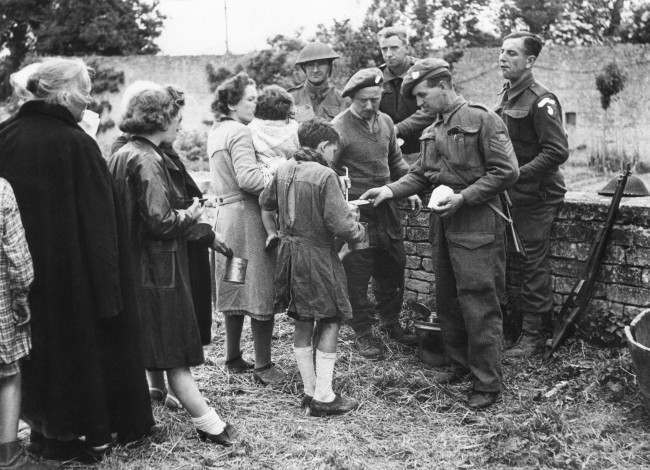
Many of the French refugees had not eaten for three or more days. They are seen receiving food from British troops in France on June 12, 1944. The feeding arrangements were organized by the Civil Affairs Department. (AP Photo)
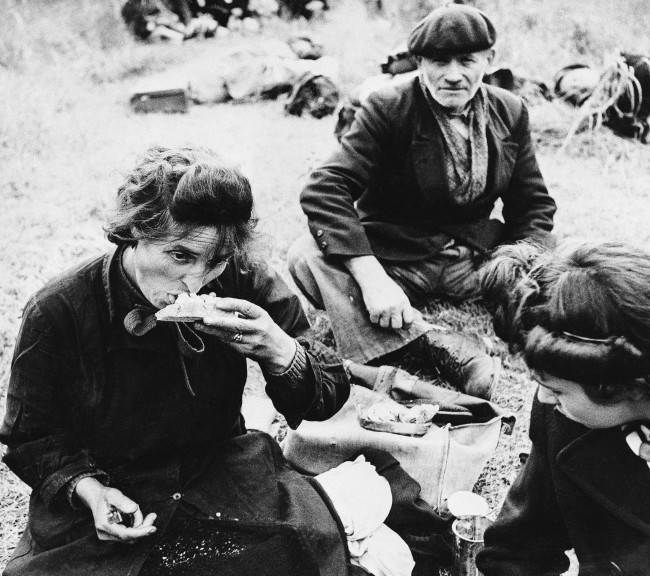
Many of these French refugees had not eaten for three or more days. In a field behind the allied lines they rest and receive food from our troops on June 20, 1944. The feeding arrangements were organized by the civil affairs dept. (AP Photo)
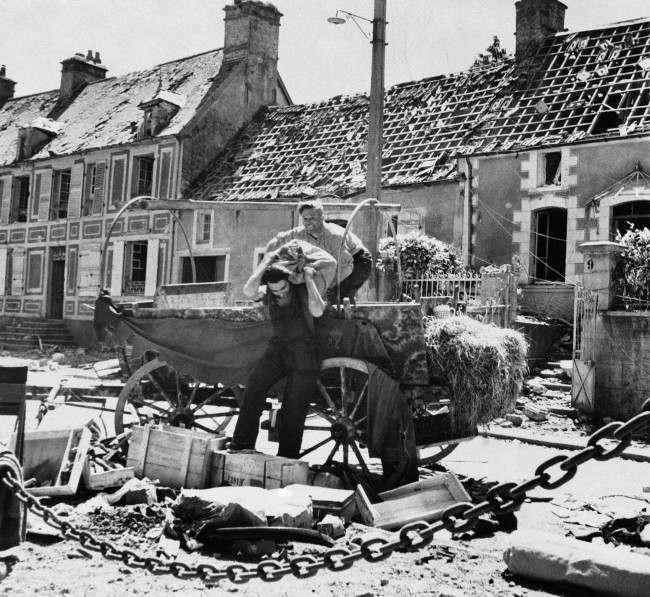
Two French civilian refugees from the battle that raged in St. Sauveur as American troops advanced on Cherbourg on June 23, 1944, unload their cart after returning to their homes. House in background, with most shingles gone. (AP Photo)
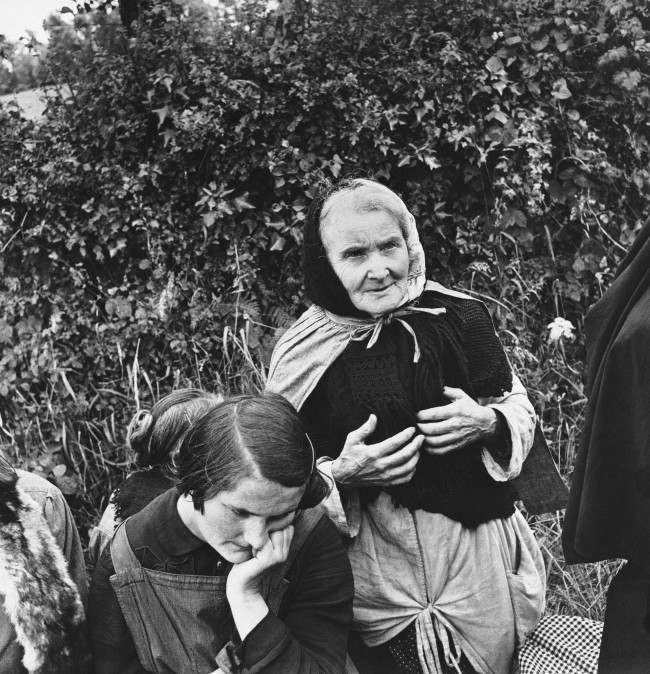
An aged French woman, who fled from her home when the allies launched their attack on the Normandy peninsula of France, waits at a roadside with other refugees for the tide of war to pass so they can return to their homes on June 24, 1944. (AP Photo)
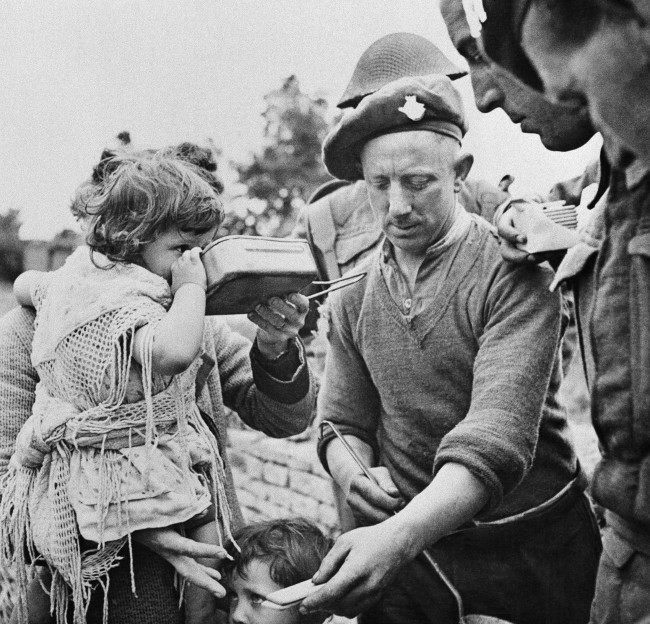
French refugees, including women and children, gather around British soldiers at a Civil Affairs Feeding Center in the Normandy beachhead sector who are supplying hot food on June 16, 1944. Many of the refugees had not eaten for three or more days. (AP Photo)
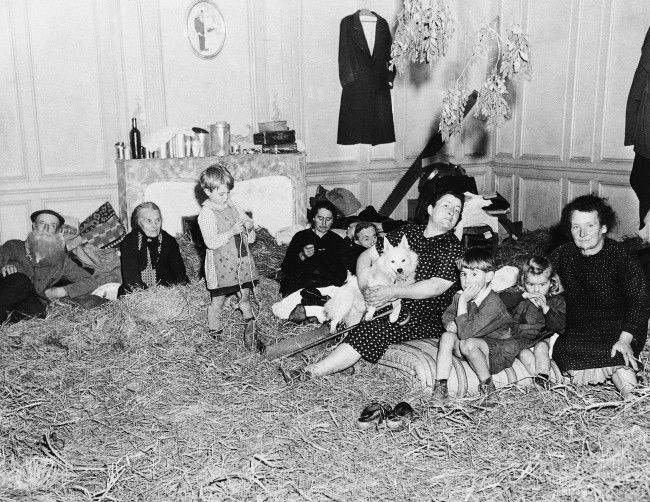
Old and young, these refugees from the French town of St. Lo, in Normandy on July 30, 1944, take up temporary quarters in a former mansion following their return to the newly liberated town. Straw has been placed on the floor to provide a little comfort in the house that are being cared for by Allied Civil affairs authorities. (**Caption information received incomplete) (AP Photo)
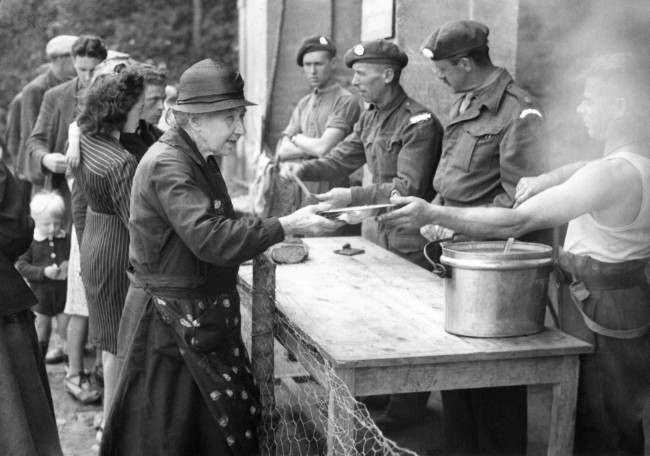
Although freedom has now been restored to parts of Normandy there remain many problems which the Allies are in process of solving. The most urgent is the housing of thousands of refugees, many of whom have fled through the German lines, to gain their freedom behind the Allied lines. Families have been split up and the task of re-uniting them is very difficult. These, and many other jobs, are being undertaken jointly by the local authorities, ÂAllied Civil AffairsÂ, Allied Medical Services and the French people themselves. The feeding of the refugees at the moment is not difficult, because Normandy is one of the richest provinces in France, and the food and dairy produce which was formerly sent to Germany and Paris is now available for local use. Despite many difficult problems and hardships the population is bravely carrying on, while every possible solution is swiftly examined, and once proved, pressed into service. Already a free newspaper is circulating in Bayeux. Meanwhile thousands of Frenchmen have volunteered to join the Allied Forces and are awaiting the call to take their part in ejecting the German invaders. British troops serving food to the refugees in the liberated town of Bayeux and the surrounding area in France on July 7, 1944. (AP Photo)
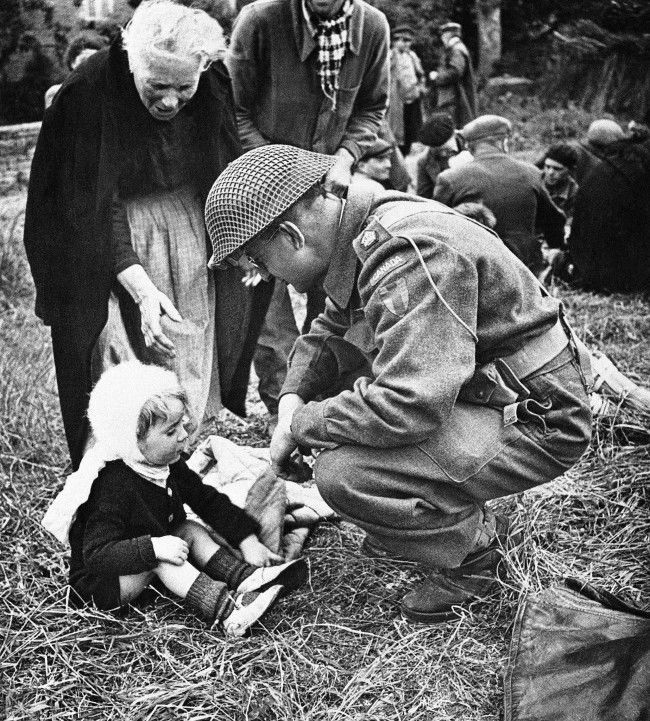
A Canadian soldier, serving with the British forces in Normandy, France, strikes up an acquaintance with a little French girl on Sept. 7, 1944, one of a group of refugees that were fed by the liberating armies. The feeding arrangements were organized by the Civil Affairs. (AP Photo)
Would you like to support Flashbak?
Please consider making a donation to our site. We don't want to rely on ads to bring you the best of visual culture. You can also support us by signing up to our Mailing List. And you can also follow us on Facebook, Instagram and Twitter. For great art and culture delivered to your door, visit our shop.

